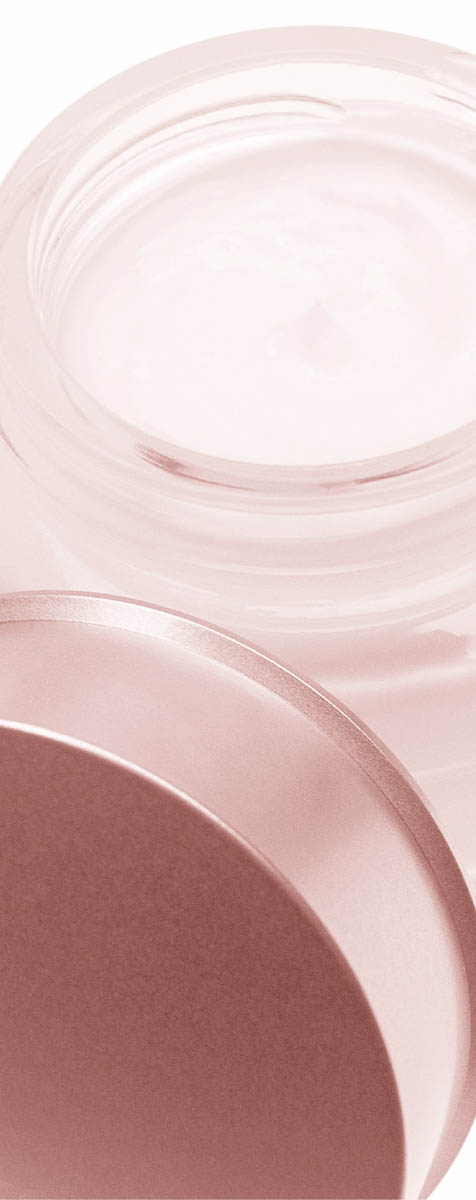

For those of us who love making skin-care products, nothing matches the supreme delight that accompanies the successful creation of a smooth, homogeneous mixture of oil and water. We learn quickly, however, that the creation of the perfect oil and water combination — known as an emulsion — can be unpredictable and elusive. So we experiment with various combinations of ingredients in a quest to avoid the most horrific of failures: the Dreaded Separation.
Driven by the determination to avoid both the Dreaded Separation and the synthetic chemicals used by commercial manufacturers, I set out years ago to make smooth emulsions of my own, using natural ingredients. I experimented with different blends of ingredients in search of the ones that would combine to form the perfect cream. After several stops and starts, I have discovered that it is surprisingly easy to make lotions and creams that rival those sold in expensive department stores and spas.
I am pleased to share with you what I have learned thus far, and know that you will improve upon my suggestions as you make your own delicious creations.
Take a look around your kitchen, and collect the following cosmeti-cooking utensils needed to create the perfect creams and lotions. If you don’t have all of them, try local thrift stores and garage sales, which are often filled with great bargains (though you may have to clean used utensils up a bit). I have reserved a set of utensils for cream and lotion making only, and I sterilize them before each batch is prepared. (See Maximizing the Shelf Life of Natural Skin-Care Products for more information on sterilization techniques.)
A scale is perhaps the single most important investment you can make when it comes to creating toiletry items. The best scales in terms of utility and convenience allow you to measure in both ounces and grams, and are equipped with a “tare” function that allows you to reset the scale to zero after the addition of each ingredient, eliminating the need to measure ingredients into separate containers.
If you don’t yet have a scale, you can use the Weights and Means chart to approximate the weights of different ingredients.
Remember when your mother baked cakes from scratch and used those nifty spatulas to scrape the mixing bowl so thoroughly that there was nothing left behind for you to lick? Use those same tools to scrape every single bit of cream and lotion out of your mixing bowl. Your skin will thank you, and so will your cleanup team. I use rubber spatulas because they are flexible enough to fit around the bowl and scrape out every jot of cream.
|
Ingredient |
1 Teaspoon Is Equivalent to |
1 Tablespoon Is Equivalent to |
|
Water and Hydrosols |
4 grams |
14 grams |
|
Vegetable Glycerin |
6 grams |
16 grams |
|
Beeswax and Other Waxes |
4 grams |
8 grams |
|
Almond Oil and Other Liquid Oils |
4 grams |
12 grams |
|
Shea Butter and Other Solid Butters/Oils |
4 grams |
12 grams |
|
Borax |
3 grams |
11 grams |

This pan setup is necessary because the ingredients in your emulsion must be hot before they are mixed together in order to form a stable mixture but should not come into direct contact with heat. Although you can use a microwave, the high levels of heat often destroy many of the healing components in natural plant materials.
If you don’t have a true double boiler, you can make one by placing a heatproof cup (I use Pyrex) containing your cream ingredients in a larger saucepan filled with hot water. When you place the cup in the hot water, the ingredients will heat up and any solids (such as beeswax, cocoa butter, and lanolin) will melt slowly. Once melted, they can be blended together to form the emulsion. You might need more than one double-boiler setup for a particular recipe, so be sure to have enough equipment on hand.
This item is useful for mixing together the oil and water. You can use a slotted spoon or fork, but the final mixture is not likely to be as smooth or creamy as when you use a mixer. For an alternative, a stick blender, blender, or food processor can be used, with the latter two being the poorest choices.
Different-size stainless-steel measuring spoons are helpful for measuring ingredients that are used in such small quantities that they don’t even register on a gram scale. Two examples are xanthan gum and borax, neither of which add any weight to speak of to a formula for 100 grams (just over 3 ounces) of product.
I do not use measuring cups to measure the volume of ingredients used in creams and lotions since I utilize gram weights. Instead, after measuring on a scale, I put the ingredients in a measuring cup, which I then use as a mixing bowl. I prefer to use heatproof glass Pyrex measuring cups; they even hold up well to the double-boiler method.
For recipes calling for 100 grams of product, I use an 8-ounce measuring cup for mixing water-phase ingredients and another 8-ounce measuring cup for mixing the oil-phase ingredients. (Use a larger measuring cup for larger batches.) These 8-ounce containers are typically not big enough to accommodate both beaters of a handheld blender, so I use only one beater at a time to make smaller batches.
Clean Popsicle sticks are useful for stirring the ingredients in both the oil and the water phases before they are mixed together. The sticks can be purchased in boxes of hundreds or thousands at craft stores, and since they are disposable, using them reduces the number of utensils that must be washed and sterilized every time you make cream.
I am a firm believer that a cream works better if it has a lovely name and is put up in a colored jar or bottle with a pretty handmade label or other appropriate decoration. Even if you’re not planning to get that elaborate, it is certainly more fun to use a cream when it’s dispensed from an attractive container. There are many suppliers of bottles and jars in every shape, size, and color; see Resources for suggestions. Be sure to check your local discount or value stores, too, which often sell unique containers at very low prices. I prefer to use glass containers because plastic jars and bottles are permeable and can compromise the stability and effectiveness of a product (see Proper Storage of Aromatic Oils for more information).
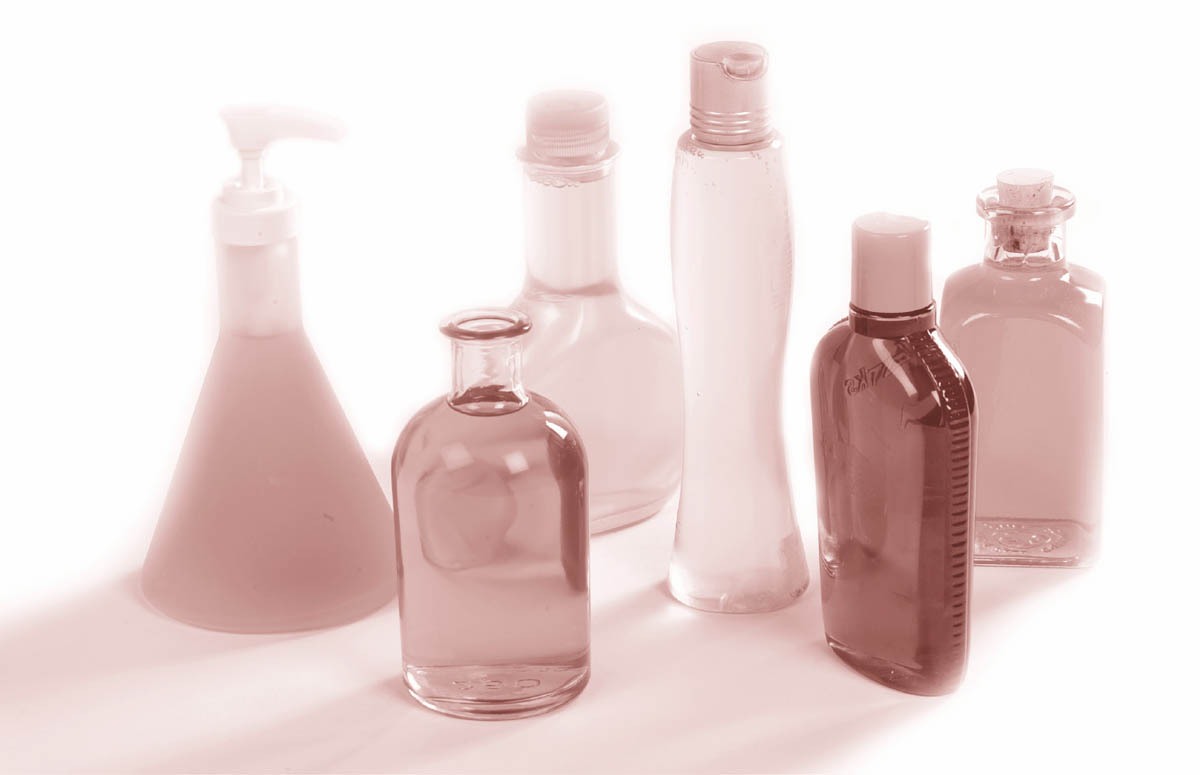
Paper towels, clean cloths, dishwashing detergent, and hot water are all musts for your cosmeti-cooking kitchen. Keep lots of paper towels on hand. And since a lot of oily substances are used to make emul-sions, a good grease-cutting dishwashing detergent is a necessity. When I make creams, I also keep a large pot of water simmering on the stove so I can quickly rinse off oils and waxes before washing and sterilizing them.
Emulsions are mixtures of ingredients that do not readily form an even and smooth mixture. A salad dressing, made of oil and water, is one such mixture. If a homogeneous dressing is desired, you must either shake the dressing vigorously before pouring or add one or more of a variety of substances to cause the oil and water to bind together. Natural creams and lotions composed largely of oil and water are much like dressing for your face.
A smooth emulsion, whether salad dressing or facial cream, is basically a blend of oil and water, plus emulsifiers that stabilize the ingredients and help prevent separation. Thickening agents are sometimes added as well.
There are two types of emulsions pertinent to handmade skin-care products: the oil-in-water (O/W) emulsion and the water-in-oil (W/O) emulsion. In an O/W emulsion, the oil makes up the “dispersed” phase, since it is dispersed into the water, known as the “continuous” phase. In a W/O emulsion, the water makes up the dispersed phase, since it is dispersed into the oil, or continuous phase. The more water in the continuous phase, the thinner the emulsion will be. Most lotion and cream emulsions are O/W emulsions, since the continuous phase, composing the majority of ingredients, is made up of water and/or water-type components.
The simplest and most effective way to create an emulsion is to combine the amounts of water and oil you like and emulsify them before using by shaking the mixture vigorously; this will temporarily combine the ingredients. Though this solution creates the purest and most natural emulsion, many people reject it because it is inconvenient to have to shake a product every single time it is used. Additionally, some believe that if a product is separated, it is necessarily adulterated; this is not always the case. In any event, if you’d rather not employ the “elbow grease” method to make your emulsion, an ingredient must be added to the mix to cause the oil and water to bind together and remain stable over the life of the product.
To create a stable emulsion, the chosen liquids — both oil and water — must bond together as finely as possible. The emulsifiers used to achieve this bond will single-handedly define the texture of the product. Thus, if they are not carefully selected and used in the proper proportion, the product will lack fluidity and texture.
With rare exceptions, emulsifiers are not added to cosmetics to increase their effectiveness as skin-care products. Most are a mélange of synthetic chemicals added purely for aesthetic purposes, and they do nothing to treat the skin. Commercial cosmetics companies, which produce creams and lotions in massive quantities for distribution all over the world, must add a proportionately substantial number of emulsifiers, and cheap ones at that, to their products. Mainstream cosmetics are typically manufactured to last for about two years, so emulsifying agents must be added in large quantities to ensure stability for a long period of time. Moreover, the products must be able to withstand a variety of storage conditions. All of these factors necessitate the use of unnatural substances, so that the product looks pristine and stunning from the moment you open the container until you use it up.
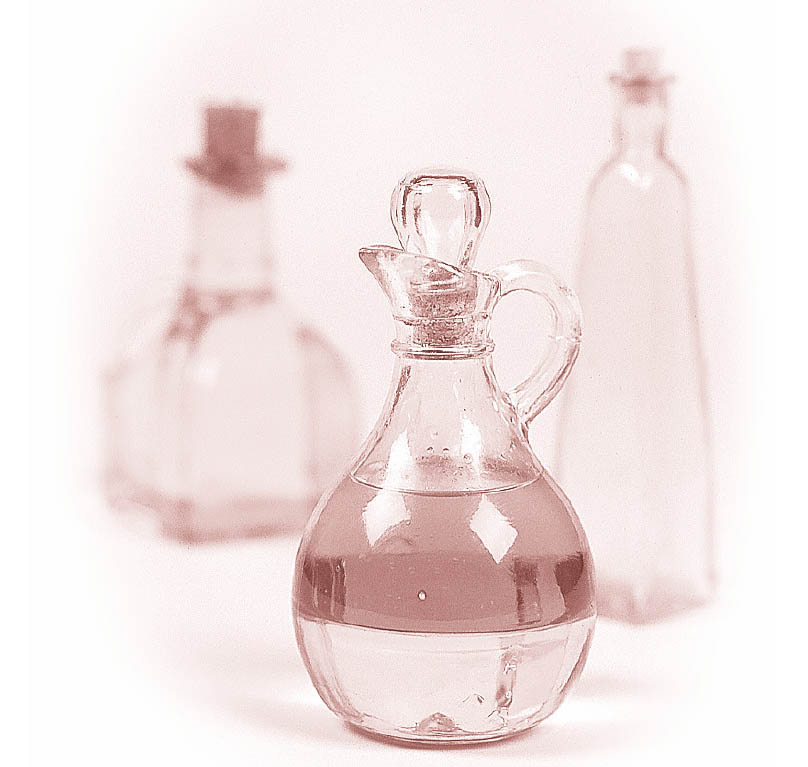
For your water-type ingredients, choose from plain distilled water, aloe vera gel, fragrant plant hydrosols, and herb teas. (All of these items are discussed in Water-Type Botanicals.) Because vegetable glycerin dissolves fully into water, it too should be included in the water phase of your formula.
In addition to water-type ingredients, there are certain powdered ingredients that dissolve or disperse in water but do not qualify as emulsifiers or thickeners (see discussion below). These ingredients are also part of the water phase of your formula.
Choose from the wide variety of base oils and fats listed in chapter 3 (see here) to complete the majority of the oil phase of your product. When selecting, remember that the texture of your finished product will be influenced by the texture of these ingredients. Oils that are solid, thick, or viscous at room temperature will produce an emulsion that shares those characteristics; oils that are liquid at room temperature will produce a more liquid emulsion.
This group of ingredients facilitates the smooth combination of oil and water. Many of them, especially the gums, give a cream or lotion a sufficient “slip” so it easily glides across and into the surface of the skin as it is applied.
Acacia gum, also known as gum arabic — perhaps the oldest and best-known natural gum — is the dried exudate obtained from various species of acacia trees (Acacia spp.). It is used extensively to emulsify food products, most notably toffee and caramel. When mixed with water, it produces a gel-like substance that stabilizes and improves the texture of creams and lotions. Acacia gum is available in several forms. I use the powdered form and add it to the water phase of an emulsion.
Used to both thicken and emulsify products, beeswax is available in bleached and unbleached forms. Bleached beeswax is white, while unbleached beeswax retains the natural color of honey. Unbleached beeswax can transfer a pleasant honey scent to your product, and sometimes a light yellowish tint as well. On its own, beeswax is an excellent thickener, but an unpredictable, unstable emulsifier. When you want to emulsify your product (rather than simply thicken it for a balm or salve), the emulsifying power of beeswax is greatly enhanced by the addition of borax; in combination, the two ingredients form a smooth, homogeneous emulsion. You will note that in my formulas I use different ratios of beeswax to borax to obtain different textures in finished products. Beeswax is added to the oil phase of an emulsion.
Borax is the common name for a type of sodium borate, an alkaline, crystalline mineral powder mined in both North and South America. Though typically used as a water softener, borax has mild emulsifying properties that make it especially useful in handmade creams and lotions. When I use beeswax as an emulsifier, I add borax to stabilize the emulsion. Even when you use a stabler emulsifier like vegetable emulsifying wax, borax gives the finished product a more spreadable texture.
Whether or not you use borax and vegetable emulsifying wax together will be a matter of personal choice. I encourage you to try making E-Mul-Shun 101 once with the borax and once without it and compare the difference in texture of the finished creams. I think you will find that the cream with the borax has a lighter texture, while the one without it feels a bit tacky and more difficult to massage into the skin without rubbing. Borax is added to the water phase of an emulsion.
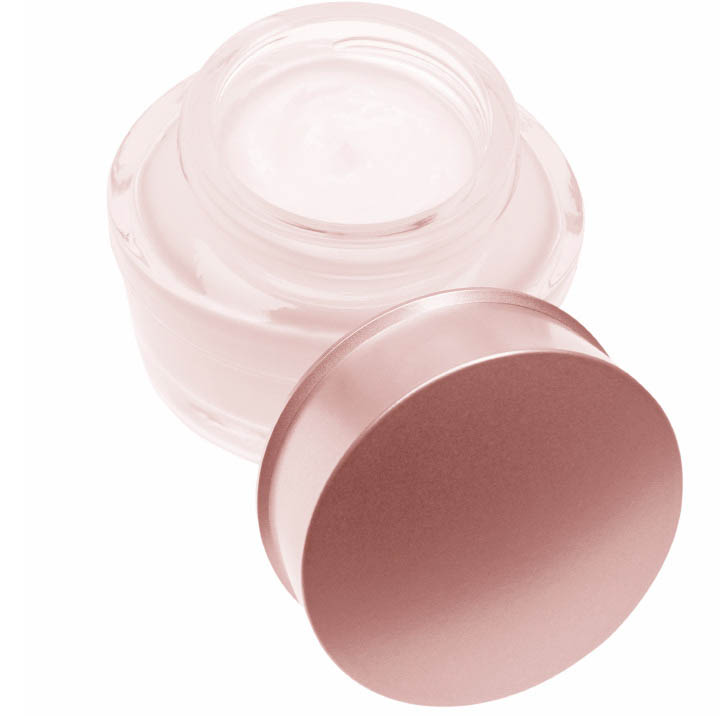
Candelilla wax is taken from a shrub (Euphorbia antisyphilitica) that is native to the desert regions of Mexico and Texas. The wax is useful as a thickener and is preferred by those who don’t want to use beeswax in their products. Substituting candelilla wax for beeswax in a 1:1 ratio produces roughly the same texture in a product. Candelilla wax is added to the oil phase of an emulsion.
Carnauba wax is an extremely hard wax taken from the wax palm tree (Copernicia prunifera). It is used mainly in candles and furniture polish and has a melting point of 181ºF (83ºC). It can be substituted for beeswax in the oil phase of an emulsion, but if the texture of the finished product is a bit hard, cut back on the amount of carnauba wax for the next batch until the desired texture is reached.
Carrageenan is a thickening agent produced from seaweed, and it is used in salad dressings, instant breakfast mixes, and other food products. It can be used to thicken and improve the texture of creams and lotions but can leave behind a sour seaweed odor as it spoils — which it does very quickly. I prefer to use some of the other gums described here, which contribute the same thickening capabilities without the shortened shelf life. Carrageenan is added to the water phase of an emulsion.
Concretes are extracted by solvents from plant materials. A complete discussion of concretes, including cautions on their use, appears in chapter 2. Add this type of ingredient to the oil phase of an emulsion to lend fragrance and a soft texture.
Floral waxes are extracted from plant materials via solvents. A complete discussion of floral waxes, including cautions on their use, appears here. Floral waxes are added to the oil phase of an emulsion to create a thicker texture and pleasant fragrance.
An Aromatic Profile
In 1988, after being laid off from her job of more than 20 years at General Electric, Marti Cook decided she deserved a break, and looked forward to a life of relaxation. She was unbearably restless just one week later when, through a series of unexpected circumstances, a complete stranger entered her life and taught her to make handmade soap. Marti adapted the recipe to suit her preferences, and then began adding milk from the goats on her farm.
After selling goat’s-milk soap at church festivals and small craft shows for several years, Marti inaugurated her business, Cook’s Cottage Farm, in 1994. Marti now lives and works on the farm with her husband and “lifter of heavy things,” Lee, as well as her bird, horse, four cats, five African guinea keats, six dogs, 30 Muscovy ducks, and 60 Saanen, Nubian, La Mancha, and Spanish Boer goats. Marti crafts a wide array of toiletry items, including soaps, lotions, bath salts, body powder, and potpourri. I was particularly impressed with Marti’s goat’s-milk lotion, which she says was perfected with “guidance from God.”
Cook’s Cottage Farm boasts a nationwide customer base. “The most challenging thing about this business,” reports Marti, “is simply to keep from going crazy. I have oversight responsibility for the entire business, and I run my home as well. It’s all I can do to ensure that I remain one step ahead of my competition.”
My favorite Cook’s Cottage Farm product is the smooth Unscented Goat’s Milk Soap.
The properties of lanolin are more fully described here. This ingredient has some emulsifying capabilities, though I would not rely upon it alone to adequately emulsify any cream or lotion product. Lanolin is added to the oil phase of an emulsion, but too much will make a product thick and sticky.
Lecithin is a fatty substance found in egg yolks and legumes. The liquid form is used to emulsify and stabilize foods and skin-care products. Lecithin also contributes moisturizing capabilities, but too much can cause stickiness. The deep orange color may transfer a golden hue to finished products. Lecithin is added to the oil phase of an emulsion.
Palm stearic acid is the treated extraction of palm trees (Elaeis guineensis) and is used as a stabilizer and thickener for emulsions. In tandem with gum ingredients, it further encourages a creamy texture and pearlescent sheen. Palm stearic acid and emulsifying wax closely resemble each another, so be careful to store them in separate containers to avoid confusion. If a cream contains too much palm stearic acid, it will be somewhat stiff and chalky, not allowing for easy application to the skin. Palm stearic acid is added to the oil phase of an emulsion.
Grated handmade soap can be used to emulsify creams and lotions. To guard against adding something to your product that could dry your skin, make sure that the soap you use is not a synthetic detergent brand. Instead, use real handmade soap that you already use on your skin and without adverse reactions. Grated soap is dissolved into the water phase of an emulsion.
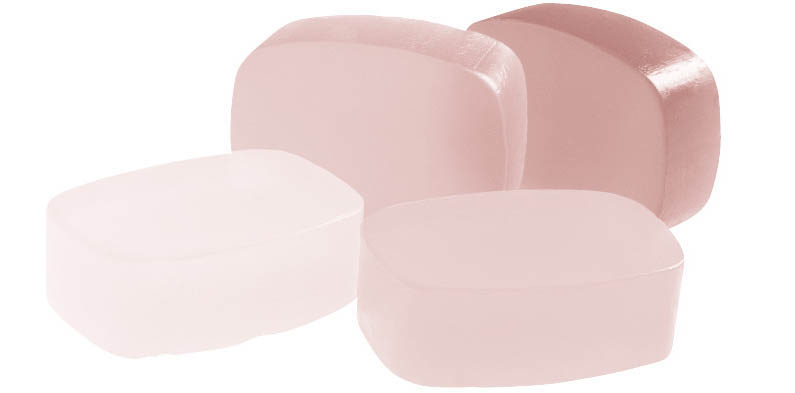
Tragacanth gum is exuded from Astragalus spp. (the most popular plant for this purpose is A. gummifer), which is part of the Leguminosae family of plants. It is typically available in very hard, dried, curved, ribbon-shaped, white-yellow translucent shavings or in powdered form. As with acacia gum, a small amount of tragacanth causes water to swell to a gel-like state, so I usually use either acacia or tragacanth (and sometimes both) in a recipe to improve the texture of creams and lotions.
Though the gel may be prepared using either the powder or the shavings, the shavings produce a much smoother gel, while the powdered preparation tends to separate. It’s time-consuming to prepare the gel from shavings, but it’s worth it for the texture this creates. I prepare a small amount of it ahead of time and use it from the refrigerator for a few weeks to make various products. Prepared tragacanth gum gel is added to the water phase of an emulsion. (See box below for instructions on preparing the gel.)
Vegetable emulsifying wax can be either plant- or petroleum-based. In either case, the wax is treated with a detergent (such as sodium laurel sulfate, or SLS) or polysorbates (fatty acid esters), in order to cause oil and water to bind together into a smooth emulsion. As far as I know, there is no natural substitute for emulsifying wax that will provide creams with this smooth texture. If you don’t want to use petroleum products, ask you supplier to find plant-based vegetable emulsifying wax. Since SLS can be drying to the skin, you may also want to ask your supplier to provide wax that is treated with polysorbates instead of detergents. Vegetable emulsifying wax is added to the oil phase of an emulsion.
Xanthan gum is fermented corn sugar and is often used to thicken and stabilize salad dressings and soups. It lends a more fluid, spread-able texture to an emulsion, making it easier to massage into the skin. Xanthan gum is added to the water phase of an emulsion but will not fully dissolve into the water. Instead, it should be evenly dispersed before the water phase and oil phase are mixed together. (See Step 3.)
Before beginning, clear your work space and determine ahead of time what recipe or formula you will use. Set aside all necessary materials and utensils, and prepare your Aromatic Journal to record your activities.
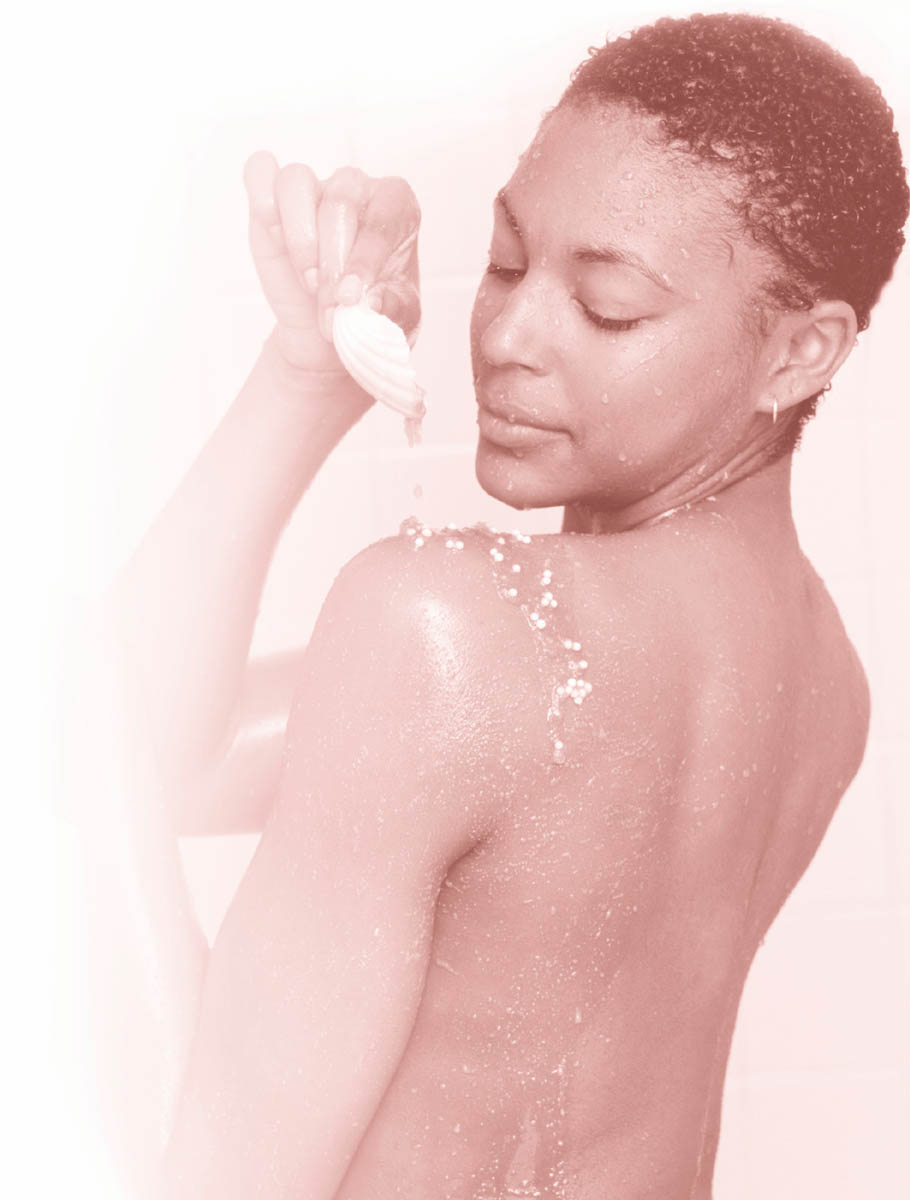
Measure the liquid and solid fats for the oil phase into a clean, heatproof measuring cup. Measure the aromatic solids (CO2 extracts, concretes, floral waxes) into a separate smaller container.
Gently heat the oil-phase liquid and solid fats in a double boiler over medium heat until the ingredients have liquefied. Do not add the aromatic solids, and do not heat the water to a roaring boil. Do not microwave the ingredients.
While the oil phase is melting, measure the liquid water phase ingredients (without the powders) into a Pyrex measuring cup. Heat liquids together gently using a second double boiler. When the oil-phase ingredients have completely liquefied, remove both the oil- and water-phase pots from the heat.
Add the aromatic solids to the oil-phase pot, and stir with a Popsicle stick until thoroughly mixed.
Add powdered and pre-prepared gel ingredients to the water phase. Using a handheld mixer, vigorously mix (on medium to high speed) the water-phase ingredients to ensure that the powders and gels are fully incorporated into the liquid. Most of the powders, such as xanthan gum, are not water soluble, so they will merely disperse rather than fully dissolve into the liquid. Be sure to disperse them thoroughly, leaving behind no clumps that can be transferred to your finished emulsion.
The addition of powders and prepared gels to the water phase will cause the liquid to thicken and take on a gel-like consistency. This quality gives the finished emulsion a spreadable, fluid texture.
Begin mixing the oil phase on medium speed. Gradually add the water phase to the oil phase while mixing. The mixture will quickly thicken and lighten in color. Continue mixing until a smooth emulsion forms, about 30 seconds for thicker creams and up to 20 minutes for thinner lotions. After about 1 minute, intermittently stop mixing and scrape the sides of the container with a clean spatula to ensure incorporation of all ingredients.
Emulsions composed mainly of ingredients that are liquid at room temperature and that do not contain emulsifying wax generally take longer to form. Note the mixing time in your Aromatic Journal. Placing the mixing bowl in a cool (not cold) bowl of water while mixing can shorten the mixing time, but if the mixture cools too quickly, it is more likely to separate.
Once the emulsion forms, add the liquid aromatics, such as essential oils and florasols. Mix at a low speed to fully incorporate.
Transfer your emulsion to the sterilized bottles and/or jars of your choice, tapping the bottom of the containers gently on the counter to force out any air bubbles. Use a clean toothpick to swirl and smooth the top of a cream packaged in a jar. Allow the product to cool completely, usually several minutes, before fixing the lid. Don’t let creams sit for too long uncovered or a “skin” will form over the surface. Some lotions will settle considerably when left for sev-eral hours, so you can fill lotion jars fully to allow for this, minimizing the headspace between the top of the product and the opening of the bottle.
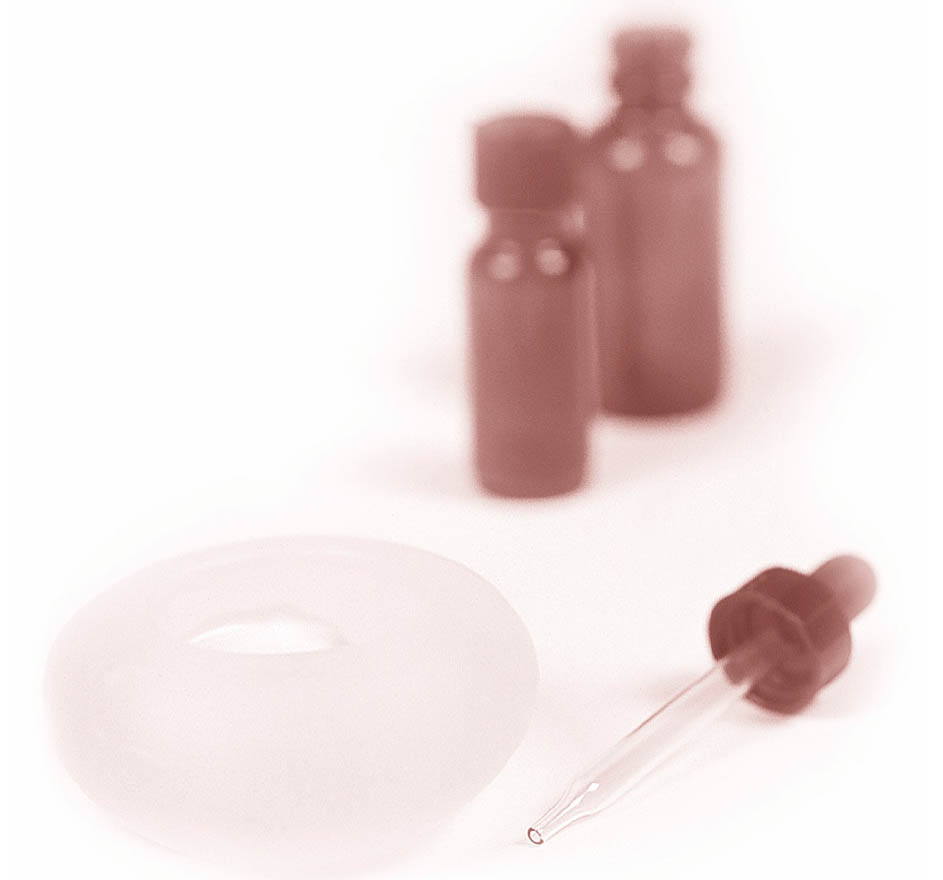
An Aromatic Profile
During my stay in South Africa in 1999, one of the first things I did (after negotiating driving on the opposite side of the road) was locate the famous Michael Mount Organic Farmer’s Market. Though I arrived in search of honey and fresh greens, my attention was diverted to a woman perched behind a table filled with bottles and jars. I was quickly enveloped in the scent of lavender and geranium emanating from the jars and the wooden display filled with bath bombs of every imaginable color and shape. But the creams . . . ooh, the creams. They got my undivided attention first.
In South Africa, it is difficult to obtain supplies. So Ginny Lee buys in bulk when she can, and is slowly growing her collection of combinations of rich, moisturizing oils. Ginny Lee makes her creams in small batches and stirs them by hand. She likes to use beeswax in her products, but the discovery of emulsifying wax has greatly increased the range of available textures in her line. Her favorite oils include lavender and geranium, and she makes a wonderful lemongrass lotion that glides right onto the skin.
My favorite Ginny Lee product is Macadamia Moisturizer & Skin Food.
|
Fats |
Waters |
Emulsifiers/ |
Aromatic Oils |
|
30%* |
60%* |
10% |
10 to 30 drops per 100 grams of formula |
|
*To make a thinner emulsion (such as for a lotion), reduce the amount of fats to 20% and increase the amount of waters to 70%. |
|||
makes approximately 3.5 ounces (99 g)
This simple recipe utilizes the formula in the chart above. After you’ve tried this one, try Sample Cream #2.
Make an emulsion following the instructions for Creating Cream or Lotion in Five Easy Steps.
makes approximately 3.5 ounces (99 g)
This recipe has also been calculated using the formula in the chart. After you’ve made both Sample Cream #1 and Sample Cream #2, compare them. Pay particular attention to the differences in texture of the products — the result of the different amounts of emulsifiers and thickeners.
Make an emulsion following the instructions for Creating Cream or Lotion in Five Easy Steps.
To maximize the shelf life of your handmade products, make sure that the utensils and work space used to make them are clean and sterile. Use utensils that are set aside exclusively for making toiletries, and wash them by running them through the top shelf of the dishwasher two times before use, or sterilize them by placing them in a pot of boiling water for 10 minutes. I don’t recommend the use of synthetic preservatives, but you can consult other books on the topic for more information about these additives.
Make your products in small batches, and pour them into clean pump dispensers and bottles with flip-top lids. Refrigerate them separately from your food in a crisper. Always refrain from dipping your fingers into your products to avoid transferring harmful bacteria into them; use a plastic cosmetic spatula or a Popsicle stick to dispense cream from non-pump jars.